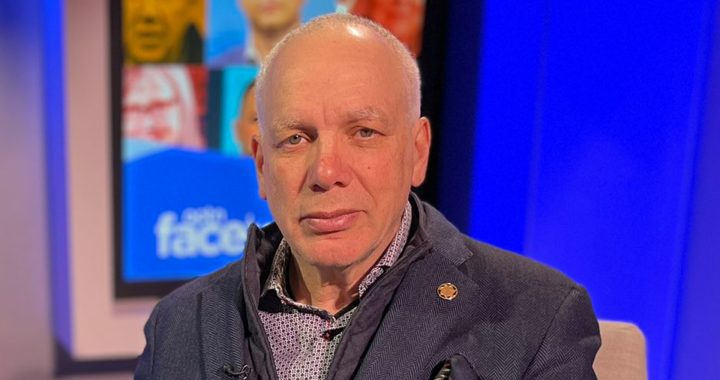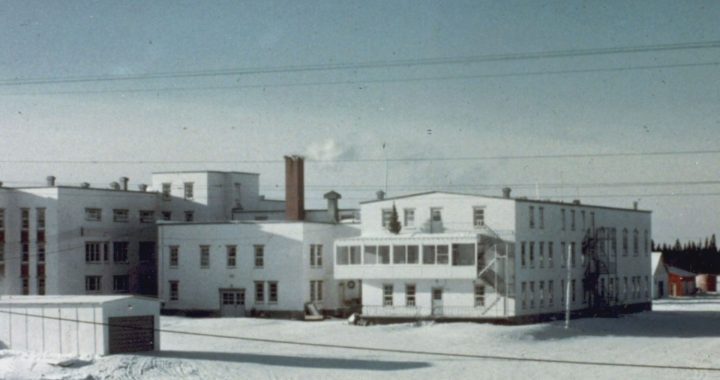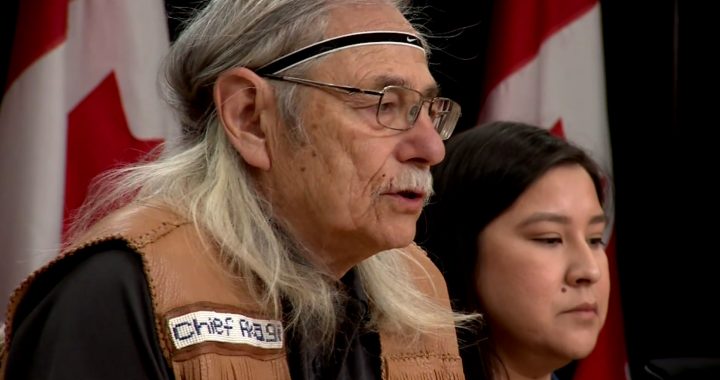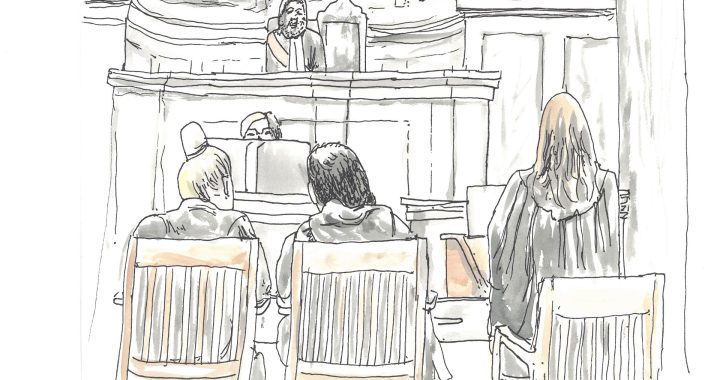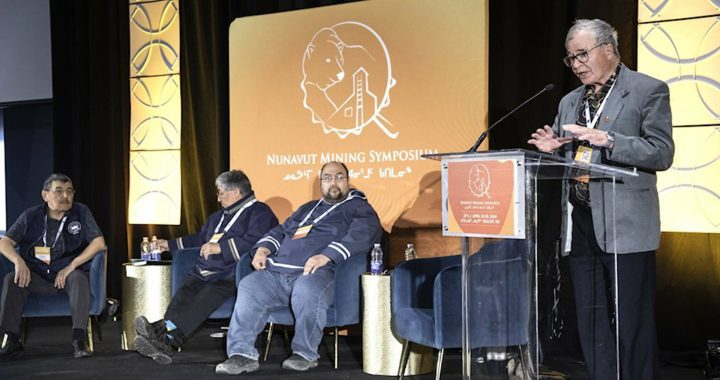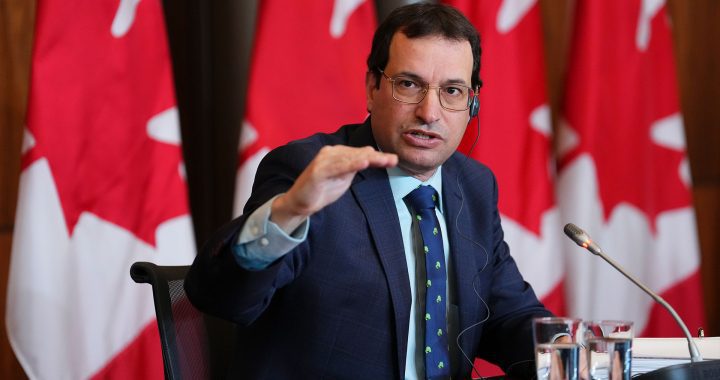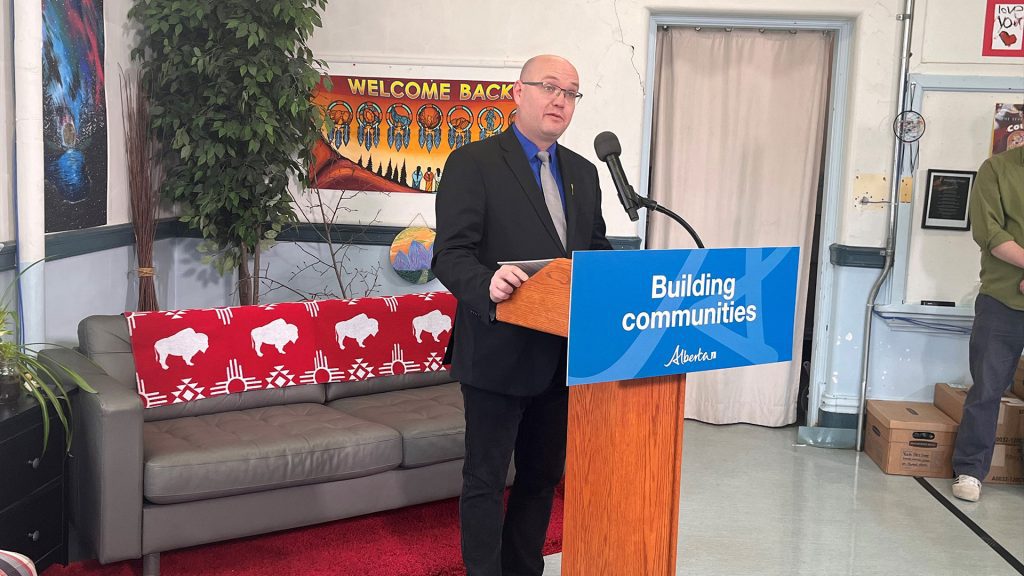
Minister Searle Turon speaks in Edmonton at the Bent Arrow Healing Society on April 2, 2024.
An Indigenous healing organization hopes the announcement of additional money for programs will help remove barriers to accessing services for Indigenous families.
“There’s always barriers whether it be transpiration or a single mother who can’t come in during service hours a lot of barrier can prevent people from coming to our services,” said Jenna Drover who works for Bent Arrow Healing Society.
“Things like accessing bus passes, workers going to community would help reduce barriers. Being able to meet people where they are will all help.”
Alberta’s minister of Children Services, Searle Turton said the province will extend funding for family resource networks with an additional $6.6 million over the next two years.
Cheryl Whiskeyjack the executive director for Bent Arrow welcomed the news about more funding and the help it can bring to organizations like Bent Arrow who often work to train other social agencies to work with Indigenous communites.
“We often have to help the various sectors build up their capacity to serve the Indigenous community in a culturally relevant way…this funding acknowledges that this takes resources and allows us to be more intentional,” said Whiskeyjack
The previous year’s budget was $63 million. The money was announced at a news conference held at the Bent Arrow Healing Society on Tuesday.
There are currently 70 networks, half of them in rural areas to serve every region of the province.
“We are committed to helping Alberta families stay together. Strong communities depend on strong families,” said Turton, minister of Child and Family Services.
The new money will help provide culturally appropriate supports for Indigenous children living both in and out of First Nations communities.
According to the annual report for children’s services, between 2022 and 2023, 32,200 caregivers and 48,600 children and youth accessed services in the province. Of those who used the family resource networks, 29 per cent self-Identify as Indigenous.
Bent Arrow Healing Society facilitates the Kikoswin (which means being with family in Cree) family resource network. It offers programs for young children including a literacy program called ‘books for babies’ so parents can read to their children, and family day activities for young children and youth.
Turton was asked by reporters if he had sat down with the grand chief of Treaty 6 and other chiefs to discuss the needs of their communities.
He said he had spoken to many communities and would be meeting with a Treaty 8 organization in an hour, but did not say whether he had met with the grand chief.
“This is one of the strategies we have regarding prevention and including studying outcomes when it comes to mental health resiliency,” said Turton in answer to a question about how these networks help prevent children from going into care.
Also called FNRs, a family resource network is a collection of agencies providing early intervention and preventative care to children from 0 to 18 years. The programs help with parenting or caregiver classes and in-home parenting education.
Statistics of Indigenous children in care
The same report shows that an average of 5,615 children each month were in care and 373 were adopted or placed in a private guardianship.
Support through Child and Family Services comes from regional hubs or through one of 19 Delegated First Nations Agencies. They represent 36 of 48 First Nations in Alberta.
In total there are 6,601 Indigenous children in the system. Seven per cent identify as Métis and the remaining 93 per cent are First Nations children. Indigenous children make up 69 per cent of the provincial caseload.
Thirty-three per cent of those children receive services through a delegated First Nations Agency.
APTN reached out to Children and Family Services about the participation rates for Indigenous people and whether there is money set aside for reducing barriers but did not hear back by publication.





